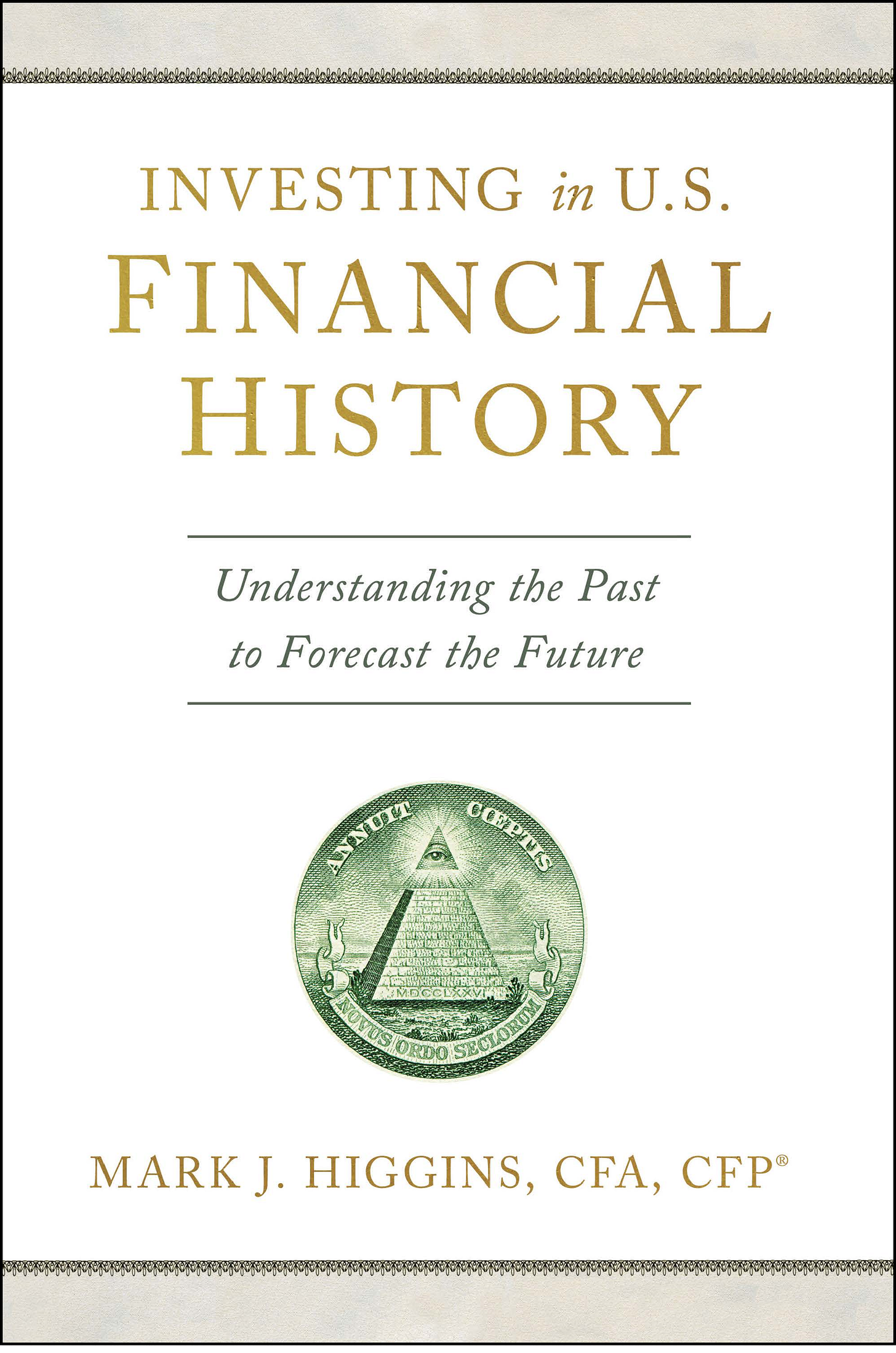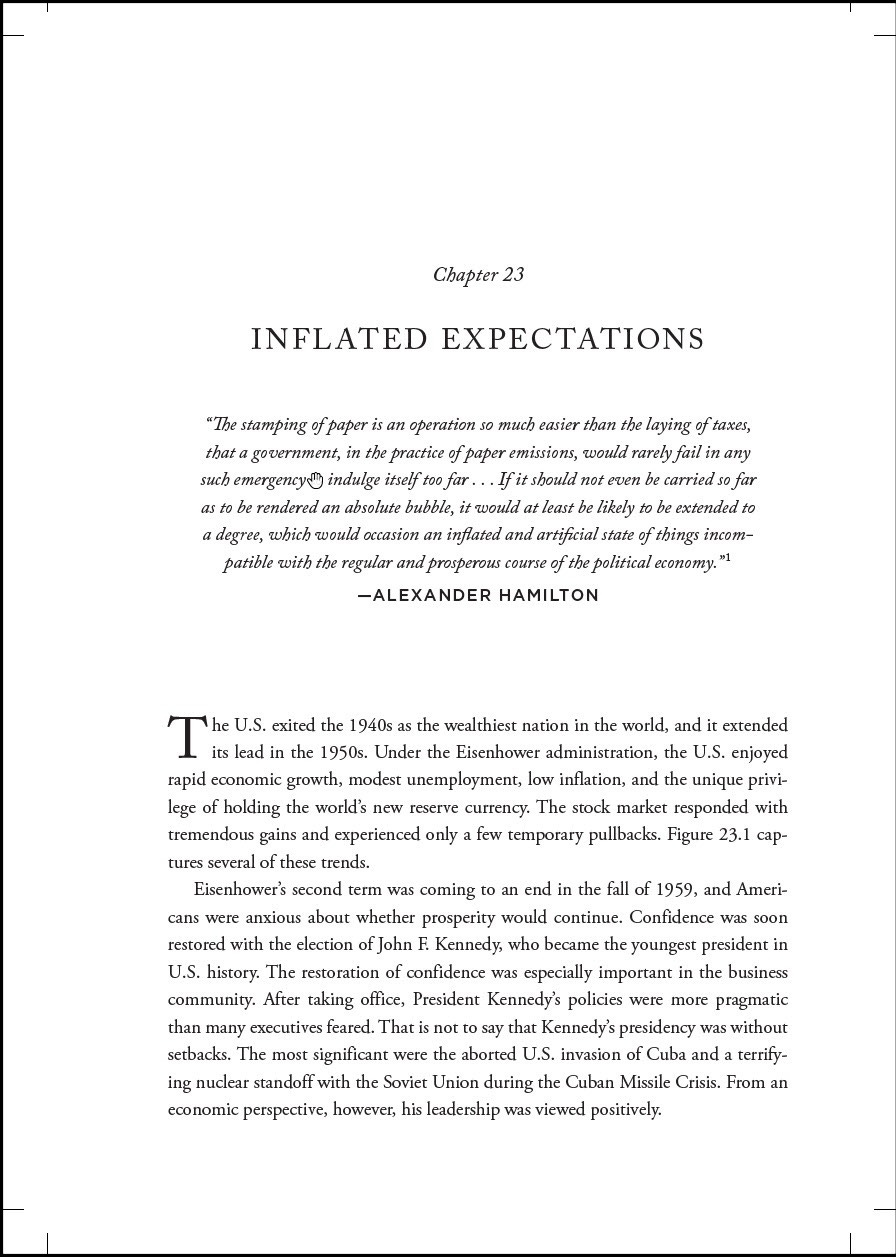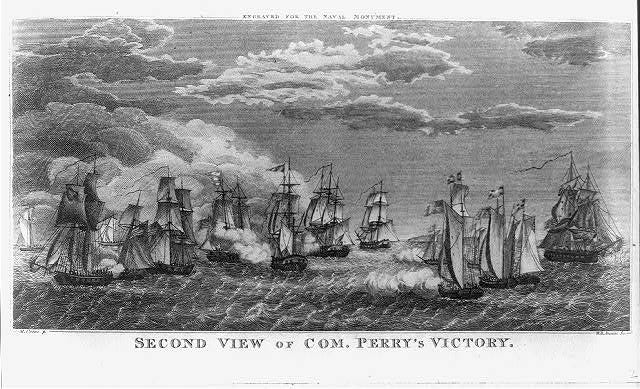Celebrating One Year of Investing in U.S. Financial History
Three Chapters That Help Explain Financial Conditions in 2025
“Credit, public and private, is of the greatest consequence to every country. Of this it might be emphatically called the invigorating principle. No well informed man can cast a retrospective eye over the progress of the United States, from their infancy to the present period, without being convinced they owe, in a great degree, to the fostering influence of credit, their present mature growth.”1
—ALEXANDER HAMILTON, U.S. Secretary of the Treasury
Investing in U.S. Financial History: Understanding the Past to Forecast the Future was published exactly one year ago today. The objective was to provide a reference to educate investors, government policy makers, journalists, members of academia, students, and curious individuals on the key financial, economic, and investment principles that have shaped the more than 230-year history of the United States of America. Although the book focuses primarily on the United States, many lessons are equally useful to citizens of foreign nations. In fact, many of the most thrilling experiences I have had over the past year involved discussions with people who reside beyond this nation’s borders.
Investing in U.S. Financial History is also a living reference. I intend to update it every three or four years, and when the story outlives me, I will pass the baton to a successor. Finally, I will continue expanding on many of the concepts in the book by publishing articles in this newsletter, as well as various media outlets, such as the Museum of American Finance’s Financial History magazine and the CFA Institute’s Enterprising Investor. To that point, the remainder of this newsletter highlights three chapters that are especially relevant today.
Placing the Present into Context
Over the past two years, I spoke with many podcasters, academics, and journalists about the important lessons from financial history. Quite a few commented that the publication of the book was perfectly timed because the lessons were never more important than they are in the 2020s. The truth, however, is that there are always historical precedents that can help demystify current events. The question, therefore, is usually which chapter of Investing in U.S. Financial History to reference rather than whether a relevant chapter exists. Today, three chapters stand out as especially relevant. Two are included as attachments to this newsletter, but one requires you to purchase the book. The password to view the attachments is Fiduciary_duty1
Chapter 1: Overdue Credit to America’s Financial Founding Father
“Persuaded as the Secretary is, that the proper funding of the present debt, will render it a national blessing: Yet he is so far from acceding to the position, in the latitude in which it is sometimes laid down, that “public debts are public benefits,” a position inviting to prodigality, and liable to dangerous abuse,—that he ardently wishes to see it incorporated, as a fundamental maxim, in the system of public credit of the United States, that the creation of debt should always be accompanied with the means of extinguishment. This he regards as the true secret for rendering public credit immortal.”
—ALEXANDER HAMILTON, First Report on the Public Credit (January 9, 1790)2
The first chapter of Investing in U.S. Financial History begins two years after the ratification of the U.S. Constitution in 1788. The former British colonists had triumphed over the British Empire, but they were left with a financial system in complete disarray. President George Washington directed the nation’s first secretary of the Treasury, Alexander Hamilton, to restore the nation’s credit and create a durable foundation for a new financial system.
Hamilton’s most pressing problem was restoring confidence in the public credit. Many colonial governments had defaulted on bonds issued to fund the Revolution, and some even failed to fully compensate Revolutionary War veterans. Hamilton assigned the greatest urgency to this task because unlike many of his peers, he understood that responding to future “public dangers” would inevitably require borrowing on attractive terms. But such terms would only be available if the credit of the nation was sound.
Very early in my research process, I suspected that this chapter would be critically important, but it was only recently that I fully appreciated the brilliance of two principles articulated by Hamilton. The first was that the public credit was primarily intended to be used to borrow during periods of public danger; the second was that the debt should be repaid once the danger subsided. The United States largely abided by these principles for roughly 150 years, but then abandoned them in the aftermath of World War II. A critical inflection point occurred in the mid-1960s, which is the second chapter of importance.
Password: Fiduciary_duty1
Chapter 23: Inflated Expectations
“Let this session of Congress be known as the session which did more for civil rights than the last hundred sessions combined; as the session which enacted the most far-reaching tax cut of our time; as the session which declared all-out war on human poverty and unemployment in these United States; as the session which finally recognized the health needs of all our older citizens; as the session which reformed our tangled transportation and transit policies; as the session which achieved the most effective, efficient foreign aid program ever; and as the session which helped to build more homes, more schools, more libraries, and more hospitals than any single session of Congress in the history of our Republic . . . All this and more can and must be done. It can be done by this summer, and it can be done without any increase in spending.”3
—PRESIDENT LYNDON B. JOHNSON, (January 8, 1964)
The first half of the 2020s were a tumultuous time, and it seems quite likely that the latter half will be even more challenging. Most journalists describe the past few years as unprecedented, but two phenomena that occurred in the 1960s and 1970s suggest otherwise. The first event was the Great Inflation of 1965-1982, and the second was the quiet abandonment of Hamilton’s principles regarding the use of the public credit. Both are covered in Chapter 23: Inflated Expectations, which is only available in the book.
Post-Pandemic Inflation and the Great Inflation
In the spring of 2021, the worst of the COVID-19 pandemic subsided, and people throughout the world emerged from isolation. Americans were especially flush with cash and eager to spend it. The sudden release of this enormous pent-up demand, combined with pandemic-related supply chain disruptions and massive monetary stimulus, fueled high rates of inflation. The Federal Reserve leadership responded belatedly, in part, because they failed to realize that inflation was driven by far more than “transitory” supply chain shocks. Eventually, however, the Fed responded correctly by aggressively raising the federal funds rate by a total of 525 basis from March 2022 to July 2023—and then holding rates at that level for approximately 14 months.
In the summer of 2024, it appeared that the Fed was on its way to returning inflation to its long-term target of two percent, but then the FOMC made a fateful error. Similar to William McChesney Martin, Jr. and Arthur Burns, who presided over the Great Inflation of 1965-1982, Chair Jerome Powell permitted the FOMC to abandon restrictive monetary policy, thereby allowing inflation to reignite. The final pages in chapter 23 help explain why Chair Powell’s actions were in error by recounting how Martin and Burns made similar errors during the Great Inflation.
Abandonment of Hamiltonian Principles
The second challenge for the United States in 2025 is far more severe than persistent inflation. The issue is dealing with the nation’s unsustainable fiscal deficits and an unprecedented level of debt that has accumulated as a result. The source of this problem can be traced to the decades following World War II. It was during these years that the United States definitively abandoned the Hamilton principles regarding the use of debt. The shift in mentality occurred somewhat gradually, but the most striking moment occurred when President Lyndon B. Johnson initiated his ill-fated Great Society programs in the mid-1960s. Since that time, running chronic fiscal deficits has become a deeply entrenched and bipartisan practice.
The nation’s current fiscal predicament is made all the more severe by the fact that entitlement spending (e.g., Social Security, Medicare, and Medicaid) is by far the biggest source of the problem, yet it remains politically untouchable. This brings us to the third chapter, which, in retrospect, I unwisely cut from the final manuscript.
Chapter X: America’s First Funded Pension Plan
“It is not improper to observe, that pensions in all countries begin on a small scale, and are first generally granted on proper consideration, and then they increase till at last they are granted often on whim or caprice as for proper considerations.”4
—NATHANIEL MACON, former Speaker of the House (January 1818)
Caption: U.S. and British ships engaged in the Battle of Lake Erie during the War of 1812; photo provided courtesy of the Library of Congress.
In 1799, the U.S. Navy established America’s first funded pension plan. The plan’s funding source was rather peculiar. At the time, the U.S. Navy was struggling with enlistment because joining the crew of a privateer was much more lucrative. For those who are unfamiliar with privateering, it was effectively a legal form of piracy. Congress authorized private vessels to capture enemy ships and share in whatever treasures they confiscated. To compete with privateers, Congress authorized a similar prize system for the U.S. Navy.
The fact that the first funded pension plan in the U.S. was financed by state-sponsored piracy is interesting in its own right, but it was not enough to warrant inclusion in the book. However, what I failed to appreciate when I completed the manuscript in March 2023 was how the rise and fall of the U.S. Navy pension served as a useful case study to evaluate the history and potential fate of entitlement programs today. In a few months, the history of the U.S. Navy pension plan will appear again in an article in the spring issue of the Museum of American Finance’s Financial History magazine. The article will recount the history of entitlement spending in the United States. In the meantime, the unpublished chapter (accessible in the link below) provides an interesting preview of this long-lost tale of piracy and pension funding on the high seas.
Password: Fiduciary_duty1
Concluding Thoughts
I hope the chapters shared in this newsletter help people view current events in a different light. Not every event happening today has a relevant, past precedent, but most do. Understanding the Great Inflation will help explain why inflationary pressures are reigniting in 2025 and why the Federal Reserve leadership should have anticipated this outcome. Understanding why Alexander Hamilton established two key principles for the use of the public debt will explain why the United States now finds itself in a dangerous position if it fails to re-embrace these principles soon. Finally, bearing witness to the rise and fall of the U.S. Navy pension plan will provide a proverbial shot over the bow which warns Americans of the potential fate of current entitlements.
First-Year Achievements for Investing in U.S. Financial History
The most nerve-wracking part of publishing this book was releasing it to the public and opening it up to criticism. A few months before publication, a friend and fellow author advised me to steel my nerves by reading one-star reviews of my favorite books. Her point was that no matter how good a book is, it will surely attract a few one star reviews. She was right, I received a couple one-star reviews over the past year, but am relieved that they were the exception rather than the rule.
In closing, I wrote this book to reveal lessons that I believe are critically important to many different stakeholders in this nation. The fact that it is achieving this objective is what gives me the most satisfaction. Nevertheless, I am also thrilled to have received a few book awards and positive, professional reviews. I have listed a few highlights below. Thank you to those who took the time to review and judge this book. And thank you to all of the readers who have invested their time to absorb and apply the lessons.
Awards
2024 New York City Best Book Awards — Winner in “Finance”
2024 American Book Fest Book Awards — Winner in “Personal Finance”
2024 Money Awareness and Inclusion Awards — Finalist for Best Book
2024 Axiom Book Awards — Bronze Medal in Personal Finance/Retirement Planning/Investing
Reviews
Advisor Perspectives — Reviewed by William J. Bernstein
CFA Institute’s Enterprising Investor — Reviewed by Martin Fridson, CFA
Publisher’s Weekly — Editorial Staff
Financial Planning — Reviewed by Tobias Salinger
Disclaimer: This is a personal newsletter. Any views or opinions expressed herein belong solely to the author and do not represent those of any people or organizations that the writer may or may not be associated with in a professional capacity, unless specifically stated. This is not to be construed as an offer, solicitation, recommendation, or endorsement of any particular security, product, service, or considered to be tax advice. There are no guarantees investment strategies will be successful. Past performance is no guarantee of future results. Investing involves risks, including possible loss of principal.
Alexander Hamilton, Reports of the Secretary of the Treasury of the United States, Volume 1, 198.
Alexander Hamilton. Report Relative to a Provision for the Support of Public Credit. (January 9, 1790).
Lyndon B. Johnson, “Annual Message to the Congress on the State of the Union,” The American Presidency Project, January 8, 1964, https://www.presidency.ucsb.edu/documents/annual-message-the-congress-the-state-the-union-25.








Nice column, Mark! I'm making my way through the book and learning a lot!